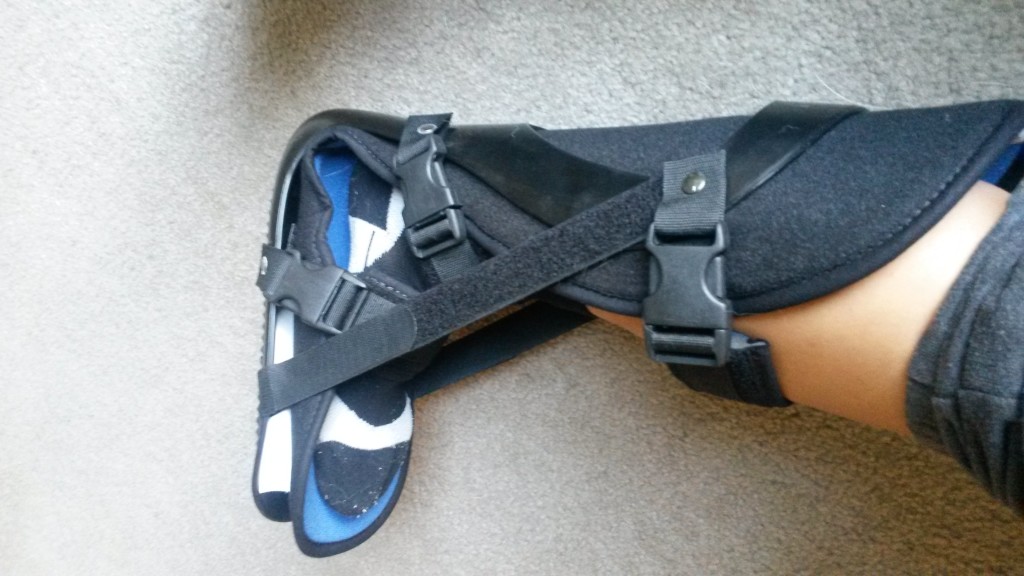I went to Ledesma Sports Medicine Clinic in Savannah for my plantar fasciitis. The clinic provides free injury consultations which was perfect to give me some feedback while I waited for the lengthy referral process that is our healthcare system.
Ernest Ledesma listened to my problems, listened to my current treatments, manipulated my feet, and watched my biomechanics standing and walking. He thought all my exercises were spot-on and gave me two suggestions, custom orthotics in my running shoes (requiring a doctor prescription) and night splints.
What are night splints?
Night splints keep your feet at a specific anatomical position or angle. They are typically worn at night while you sleep, but could be worn during “lazy time” watching TV or reading. Some are less bulky like The Strassburg Sock, but he specifically recommended these to me.
How do night splints help plantar fasciitis?
When you sleep, your feet are typically in plantar flexion which lets the plantar fascia, Achilles tendon, and other intrinsic muscles relax and shorten. The splints keep your feet in dorsiflexion which keeps your muscles elongated so it isn’t as stressful for them to go from relaxed in bed to stretched in the morning. Some believe they only relieve morning pain and do not improve your overall foot health. However, the Journal of Rehabilitation Research and Development published a study showing that combined use of night splints with orthoses (orthotics) was more effective than orthoses alone for foot pain.
How the heck do you sleep in them?
Not well.
The things did not come with single line of instruction. Doesn’t seem that hard though, right?
Night 1: Woke up every 1 or 2 hours because toes were tingling. Alternating between taking them off and putting them on.
Night 2: I adjusted the little white wedge further in. Woke up a few times. Took them off for a bit. The next morning my toes were tingling, like they did not get enough circulation. Oops.
Night 3: Um, my toes were still tingling from night 2, so I got scared and stopped wearing the splints.
Four days later(!!!), my toes finally felt normal. I learned how poor foot circulation is in a HEALTHY person, and understood the danger of those with poor lower extremity circulation. When I saw Ernest Ledesma to create my custom orthotics, I brought one of the splints to get some instruction.
How do you put them on?
- Unfasten the three straps for your foot/leg AND the two straps on the side that create the dorsiflexion
- Put your foot in, making sure your ankle is seated against the brace.
- Fasten the foot and leg buckle straps, tight enough to keep your foot in place
- Pull the two straps on the sides simultaneously so that you feel a slight stretch
- Adjust the side straps each night, perhaps marking your progress to a greater stretch
We removed the white wedge that creates a sharper angle for me since my toes were falling asleep. So yeah, I was doing it all wrong (as are many in the online reviews). They should really write some instructions to stick in the box.
Do they work?
The next morning, my feet were less painful, but there are too many variables to say yes. I am going to continue to use them, but they were expensive and create a major sleep deficit, waking me up at least twice a night. The fascia jury is still out.
Sources:
Podiatry Today
Journal of Rehabilitation Research and Development









Leave A Comment